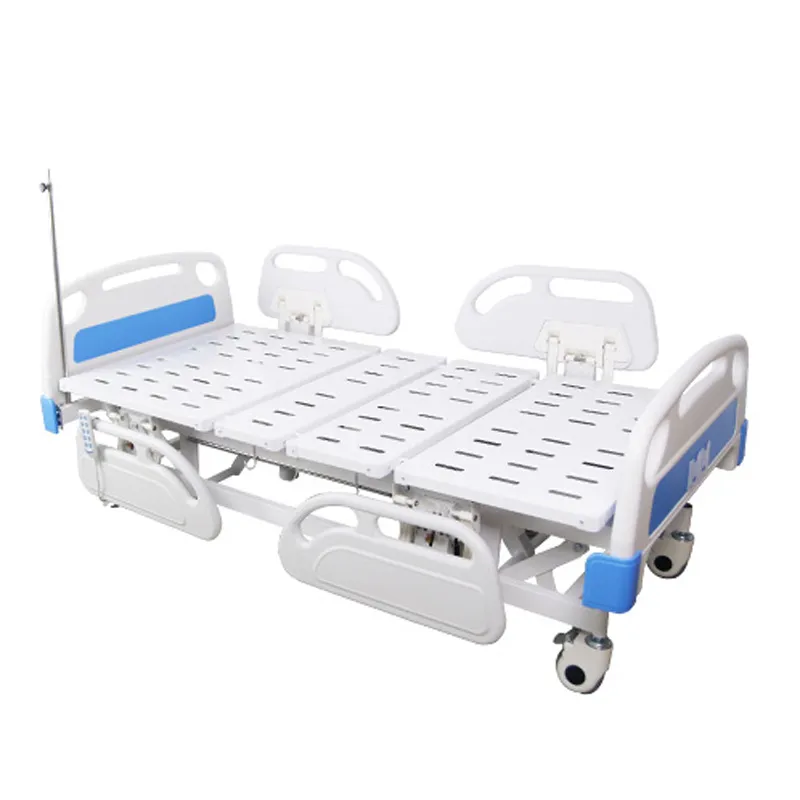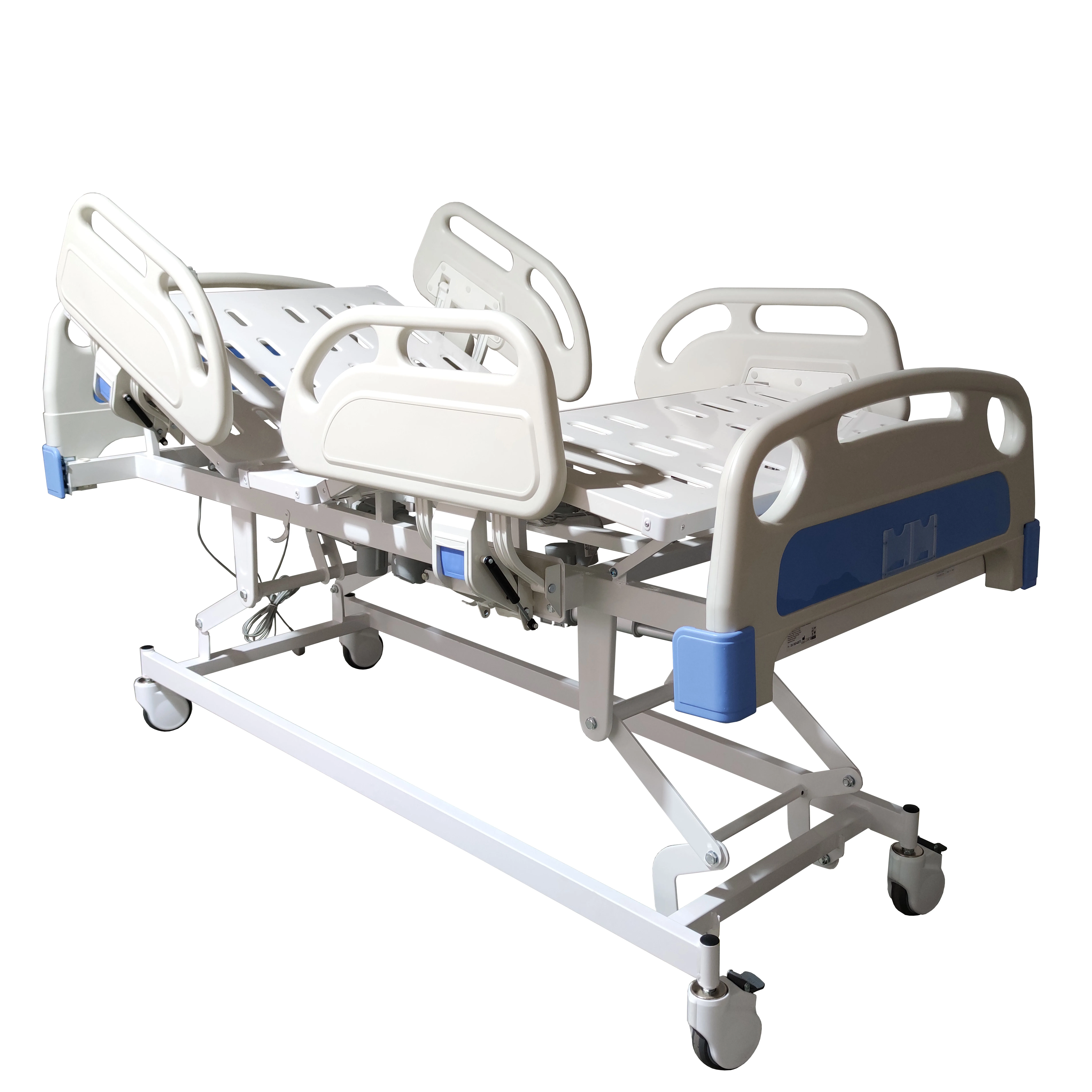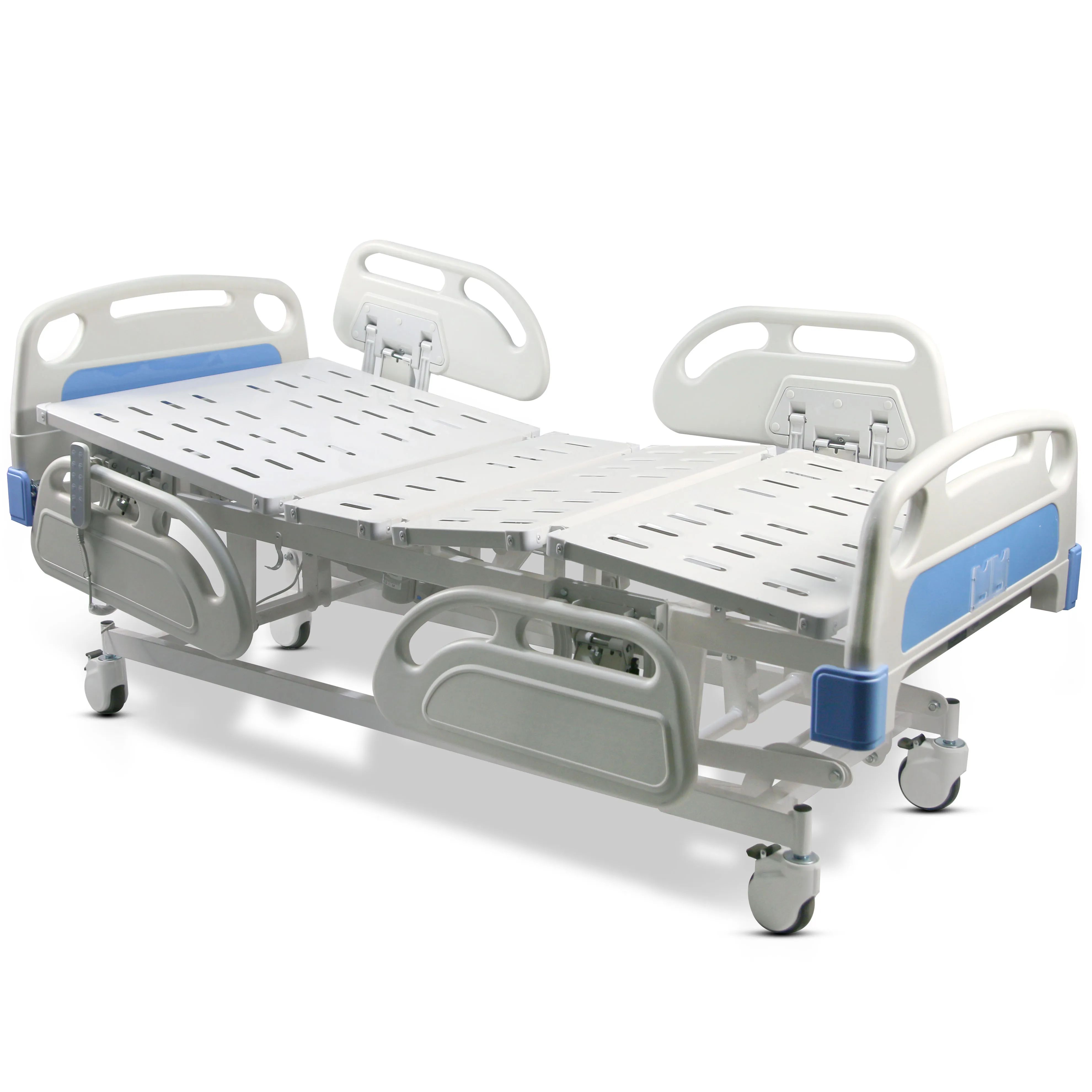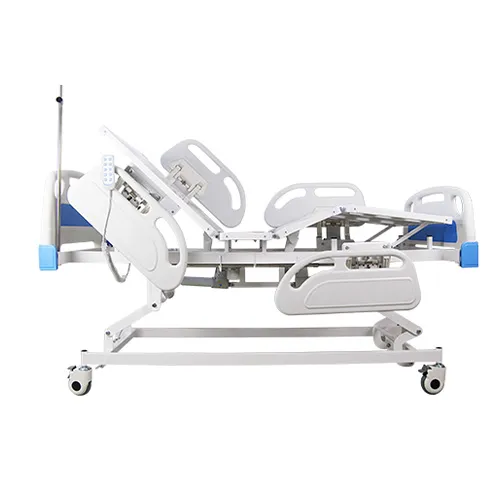"Can electric hospital beds be disassembled?" is more than a simple yes or no. With the increasing frequency of medical institution upgrades, the growing demand for home care, and the inter-hospital transfers driven by regionalized treatment, the disassembly of electric hospital beds—in packaging, handling, installation, and maintenance—has come under the spotlight.
This article will focus on the core question of "Can electric hospital beds be disassembled?" by systematically examining the design logic, disassembly areas, non-disassembly red lines, operating specifications, and procurement recommendations, providing readers with a practical decision-making guide.

Why has the question of "Can electric hospital beds be disassembled" become such a hot topic?
In the past, electric hospital beds were mostly delivered and assembled within hospitals, and users rarely considered whether they could be disassembled. Today, the industry landscape has shifted:
• The rise of home care: Electric hospital beds are being deployed in residential buildings and retirement communities. With narrow stairways and limited elevator capacity, the question of whether they can be disassembled for home use has become a primary concern.
• Cross-regional deployment: Electric hospital beds are frequently packed, transported, and reassembled for use in aid projects, emergency medical rescue operations, and temporary wards (such as makeshift hospitals).
• Widespread maintenance outsourcing: Hospitals are outsourcing some maintenance, and service efficiency and downtime are strongly correlated with the ability to quickly disassemble and replace modules.
• Dual pressures of cost and compliance: Demountable modularity allows for "replacing parts without replacing the bed," potentially reducing overall lifecycle costs, but also requires strict safety and documentation management.
In this context, the question of "can electric hospital beds be disassembled" is no longer a single point of operation; it becomes a systemic issue encompassing design, logistics, compliance, and nursing processes.
Electric hospital bed: "Disassembly" does not mean "free disassembly."
The industry prefers to use the concept of "limited disassembly" (Serviceable/Replaceable Parts) to define the disassembly of electric hospital beds:
• Qualified objects: Replaceable parts and detachable structures clearly marked by the manufacturer in the instruction manual and service manual.
• Qualified conditions: Completed by trained personnel using specified tools and following procedures, with power off, load removed, and secure support in place.
• Qualified purpose: To provide a compliant path for transport packaging, on-site installation, maintenance and repair, and fault replacement, without altering the core load-bearing and safety parameters of the electric hospital bed.
In other words, the "disassembly" feature of an electric hospital bed is a limited engineering feature, and users are not encouraged to disassemble it down to the bone. Any disassembly beyond the manufacturer's authorized scope may void the warranty, inaccurate specifications, and pose safety risks.

List of Common "Disassembly/Separable" Parts in Electric Hospital Beds
Based on various mainstream product and service manuals, electric hospital beds are generally designed to support the following compliant disassembly (slight variations between brands and models; manufacturer documentation shall prevail):
1. Headboard/Footboard
• These typically utilize a snap-on design with hidden bolts for easy disassembly, cleaning, and replacement.
• They can be removed before transporting the bed into the home to reduce the width and length.
2. Side Rail Assemblies
• These are commonly modular side rails that can be replaced as a whole or removed for maintenance.
• As they involve position limits and anti-pinch mechanisms, disassembly and assembly must be performed according to the work steps and clearances must be re-measured.
3. Bed Panel (Sections)
• If a sectioned design is used, these can be disassembled and assembled piece by piece for easier cleaning and reduced weight.
• After disassembly and assembly, the position and tightening torque of the back/knee linkage must be calibrated.
4. Casters and Central Brake Lever
• Casters are typically consumable parts and can be quickly replaced.
• When calibrating the central brake linkage, ensure consistent braking at all four corners.
5. Accessory Interfaces and Hanging Accessories
• Accessories such as IV pole holders, drainage bottle holders, and bedside table rails are often tooled for quick assembly and disassembly.
• These can be flexibly added or removed based on departmental needs, reducing transport volume.
6. Electric Control Handle and Connecting Harness
• The cables for the hand control and bedside panel are replaceable and utilize foolproof connectors.
• During disassembly and assembly, pay attention to electrostatic discharge (ESD) precautions and ensure that the cable routing is non-pinchable.
7. Battery/Power Supply Module (if applicable)
• The backup battery and power supply unit are often separate modules for easy replacement in the event of a fault.
• After replacement, perform a self-test and burn-in test to confirm that the number of emergency actions meets the specified requirements.
8. Decorative Parts and Cushioning
• These include corner guards, end caps, cushions, and cable retainers, and can be replaced immediately upon removal.
• Although considered "small," these components are directly related to collision protection and cable protection.

Red Lines for Non-Disassembly: Load-Bearing Structures and Drive Systems
In contrast to the "removable" components listed above, the following structures and systems are generally prohibited from unauthorized disassembly:
1. Main Load-Bearing Bed Frame/Lifting Columns/Scissor Links
• These components bear the weight of the entire bed and patient and require welding, riveting, and high-strength fastening.
• Casual disassembly may alter the load path and stability, posing a risk of structural failure.
2. Linear Actuator Motor/Drive Box/Main Control Board
• These components are related to position limits, overload protection, and synchronous control. Disassembly may compromise calibration.
• Internal disassembly and adjustment are prohibited without the manufacturer's fixtures and procedures.
3. Safety Limits and Anti-Pinch Mechanisms
• Safety-related micro-movements, Hall Effect sensors, limit stops, etc. require professional calibration.
• Disassembly/modification will directly impact safety features such as anti-pinch and anti-collision features.
4. Electromagnetic Compatibility (EMC)-Related Wiring
• Improper wiring and shielding can introduce electromagnetic interference, impacting the operation of monitoring and infusion equipment.
• Unauthorized removal of ground wires, shielding layers, and harness anchor points is prohibited.
5. Calibration Data and Serial Number Labels
• Unauthorized removal or damage to labels will result in loss of evidence for traceability and warranty purposes.
• Electronic labels related to calibration data such as weight and angles are strictly prohibited from being replaced.
Key Points: The "red line" areas of an electric hospital bed are concentrated in the load-bearing and drive cores. Disassembly of these areas not only affects safety and stability but may also trigger regulatory and liability issues.
How should electric hospital beds be disassembled appropriately in different usage scenarios?
1. Transportation and Home Installation
• For new hospital installations/department relocations: First, remove the headboards, footboards, side rails, and accessories to reduce the size, then relocate using dedicated lifting/carrying straps.
• Home entry: When encountering narrow stairways or small elevators, prioritize split-frame or folding electric hospital beds. For single-unit structures, only disassemble the exterior accessories; do not attempt to disassemble the supporting frame.
• Packaging and protection: Use anti-static bags and anti-mismatch labels on the removed electric control handle, power supply box, and wiring harness terminals to prevent damage and misconnection during transportation.
2. Daily Cleaning and Infection Control
• For high-frequency disinfection scenarios, the headboard, footboard, and bed panel can be quickly removed for deep cleaning.
• Before disassembly, ensure the power is off, the bed is in the lowest position, and the guardrails are locked. After disassembly, use the designated cleaning agent to avoid corrosion on seals and plastics.
• After reassembly, perform a complete self-inspection of the guardrail locking, lifting, and angle movements.
3. Maintenance and Repair
• Common maintenance includes replacement of casters/brakes, hand controls, wiring harnesses, and decorative components.
• Repairs involving motors, main controls, and lifting columns should be performed by the manufacturer or authorized engineers. If necessary, complete replacement of the entire unit should be performed and the unit returned to the manufacturer for analysis.
• Maintenance records should include the component serial number, operator, and retest results, forming an auditable closed loop.
4. Emergency and Power Outage
• Electric hospital beds with battery backup can perform critical movements during power outages.
• If the bed becomes immobilized, a mechanical release/emergency stop mechanism will return the bed to a safe position.
• Any resetting and retesting after an emergency release should be logged, and a secondary safety inspection should be conducted as necessary.
Model Differences: Not every electric hospital bed is equally easy to disassemble
• ICU/critical care electric hospital beds emphasize stability and load-bearing capacity, with a more integrated chassis and lifting mechanism. Disassembly is primarily at the peripheral and accessory levels, and the bed's ability to be disassembled is less.
• General-purpose electric hospital beds: While ensuring strength, they emphasize standardization and ease of maintenance, with relatively removable peripherals and decorative components.
• Home/long-term care electric hospital beds: Some models can be folded or split into two or three sections for easy transport into the home; the motor and control system remain subject to restricted disassembly.
When purchasing, consider the application priorities. If frequent transport into the home is essential, a split/folding design is recommended. If the bed is primarily used for critically ill, stable care, stability and safety redundancy should be prioritized.

Operational Specifications: A Ten-Step Guide to Compliance Disassembly and Assembly
To reduce risk and improve consistency, this reporter has compiled a ten-step guide to compliance disassembly and assembly of an electric hospital bed (illustrative; please refer to the manufacturer's manual for details):
1. Identity Verification and Authorization: This must be performed only by trained personnel within the scope of authorization.
2. Environment and Information: Warning signs should be displayed to inform patients and departments, and movable items should be cleared from the bedside.
3. Electrical Safety: Disconnect the power cord and wait for the capacitor to discharge. If a battery is installed, perform the disconnect procedure.
4. Mechanical Safety: Lower the bed to its lowest position, lock the four corner casters, and use safety blocks if necessary.
5. Labeling and Photography: Photograph and label the wiring harness, clips, and fasteners to prevent incorrect reassembly.
6. Sequential Disassembly: Disassemble peripherals first, then structural components, and electrical components first, then mechanical components. Follow a top-to-bottom, outside-to-inside approach.
7. Anti-Static and Anti-Contamination: Place electrical components in ESD bags and structural components in dust bags. Isolate any contaminants.
8. Orderly Storage: Categorize fasteners and box them, recording the quantity and specifications to avoid leftover screws.
9. Reinstallation and Torque: Reinstall critical connections according to the torque values specified in the manual. Straighten the wiring harness to ensure there are no pinch points or drag.
10. Functional Retest: Perform a full motion self-test (lift, back-knee linkage, guardrail locking, brake/steering, and emergency CPR position), and complete a retest form for record keeping.
Common Misconceptions and Clarifications
Myth 1: All electric hospital beds can be "easily disassembled into sections."
Fact: Only some residential/split-unit designs support large-scale segmentation; critical care/ICU-level units emphasize integrated rigidity and cannot be forcibly disassembled.
Myth 2: Disassembly and assembly are simply physical tasks that anyone can perform.
Fact: Electric hospital beds involve electrical safety, load paths, and anti-pinch limiters, requiring trained personnel to follow the manual.
Myth 3: As long as the bed is functional after reassembly, it's considered qualified.
Fact: After reassembly, a full motion retest and safety parameter verification must be performed, and traceable records must be maintained.
Myth 4: The motor can be disassembled first for home access.
Fact: Unauthorized disassembly of the motor and lifting columns is strictly prohibited. Consequences include miscalibration, jamming, and safety failures.
Can electric hospital beds be disassembled?
The standard answer is: Yes, but only within the scope of modular disassembly and assembly authorized by the manufacturer, and only by trained personnel according to the manual and procedures.
For hospitals and care facilities, this means: "disassembly" should be included in technical terms and service agreements before purchase; and during use, safety should be guaranteed through standardized disassembly and assembly procedures, comprehensive records, and rigorous retesting.
For home users, the key is to choose a split/foldable electric hospital bed model and leave installation and necessary disassembly to professionals.
When "disassembly" becomes an engineering capability of electric hospital beds, rather than a misconception of "disassembly at will," it will help make the equipment more efficient throughout the entire process of transportation, installation, maintenance, and upgrades, ultimately ensuring the safety and warmth of frontline caregivers.
How do your hospital beds differ from others in the market?
Our hospital beds feature electric or manual adjustment, sturdy steel frames, and customizable head/footboard designs. As a manufacturer, we offer various models for home care, clinical use, or long-term patient management. All beds meet CE and FDA standards. We support low MOQ, wholesale pricing, and custom features like side rails and control systems, with fast production turnaround and bulk discounts.










